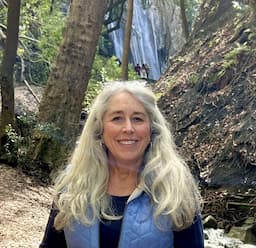In Spirit & In Truth: History of the Charismatic Movement
In Spirit & In Truth: For the past year or so, I’ve been working through the role of the Holy Spirit in the Christian life, and specifically the practice of the spiritual gifts. I want to invite you to think through this with us. This is one of the most important aspects of our lives as believers. The gift of the Holy Spirit is one of the fundamental changes that takes place in us when we become believers. Most of us live like nothing ever changed. The Bible calls us to something more than that.
We’ve looked at cessationism; Prophecy and Speaking in Tongues, and now we’ll spend a few weeks looking at continuationism.
It would be impossible to give a concise history of the charismatic movement for two reasons. First, the history of the charismatic movement is the history of the role and doctrine of the Holy Spirit through the history of the church. There are elements among the continuationist camp that stretch back to the apostles themselves. Second, there is no single movement, but instead a web of hundreds of interconnected movements that have taken place through church history. There are so many that Sam Storms refers to the “Charismatic Movements.”
The word, charismatic, comes from the Greek term, charismata, found in passages like 1 Corinthians 12:4. The root word, charisma, is the Greek word that means gift. It has a broader meaning than just spiritual gifts, but this root is important to keep in mind. More commonly, the word charismatic today refers to people who believe that the supernatural gifts of the Spirit; prophecy, speaking in tongues, healing, and others, have continued in the church and should be practiced today. They are often called continuationists for that reason.
Here are some famous charismatics today grouped roughly by their movements:
Reformed Charismatic: Matt Chandler, John Piper, Mark Driscoll, Sam Storms
Pentecostal: Bill Johnson, Mike Bickle, Stephen Furtick, Jack Deere, John Wimber
Pentecostal, Prosperity Gospel: T.D. Jakes, Joyce Meyer, Joseph Prince, Benny Hinn, Kenneth Copeland, Oral Roberts
Musical Groups and Organizations: Hillsong, Jesus Culture, Bethel Music, Vineyard, Elevation, IHOP
These lists give you a glimpse at just how many different kinds of coninuationists and charismatics there are. No two groups are exactly alike. Let’s begin our study of charismatic theology with a very broad overview of the history of the various movements in the U.S.
The History of Pentecostalism
With a few rare exceptions, the charismatic gifts were not commonly practiced in the church between the 1st century and the 20th century. There are three movements that began after the Reformation that largely set the stage for the modern charismatic movements; Christian mysticism, the Wesleyan holiness movement, and American revivalism.
Most people point to a definite beginning for the modern charismatic movement. In 1898, Charles Parham set up shop in Topeka, Kansas and began teaching that those who were filled with the Holy Spirit would speak in tongues. Soon after, in 1901, Agnes Ozman, who was attending Parham’s church and school, spoke in tongues for the first time. The modern Pentecostal movement was born.
Around the same time, one of the most famous Pentecostal groups was also getting its start. In 1906, William Seymour, once a student of Parham’s, moved his church to Azusa Street in Los Angeles, California. In the years that followed, tongues and healings took broke out in large numbers in Seymour’s ministry, and that period of three years has come to be known as the Azusa Street Revival. These early groups consistently taught that speaking in tongues was not just one of the spiritual gifts, but that it was a necessary consequence of being filled with the Holy Spirit, and it came to be expected of all true believers.
Over the next few decades, Pentecostalism spread rapidly across the country and produced many well-known offshoots; the Latter Rain Movement, David DuPlessis’ worldwide ministry, Oral Roberts Pentecostal-prosperity blend, the Assemblies of God denomination (a branch that broke off over their explicit affirmation of classic trinitarianism), and later the Jesus movement, and the Word of Faith movement.
The Third Wave
The most popular modern branch of the charismatic movement is called The Third Wave. Here’s Sam Storms on what separates this group from the others:
The Third Wave, a phrase coined by C. Peter Wagner, refers to the growing and increasingly organized, numbers of conservative evangelicals who now embrace the full range of spiritual gifts. Principal among those in the Third Wave is the Vineyard. The "first wave" of the Holy Spirit, explains Wagner, was the classical Pentecostal movement that began in 1906. The "second wave" was the charismatic movement that saw traditional denominations embrace the ministry of the Holy Spirit. As noted above, this is generally dated with the experience of Dennis Bennett in 1960-61. The "third wave", therefore, is the embracing by evangelicals of the gifts of the Spirit while at the same time rejecting several of the classical Pentecostal and charismatic distinctives…
These doctrinal distinctions serve as a guide for differentiating the charismatic groups today. Third Wave groups, as opposed to classic Pentecostal groups, Word of Faith groups, and Holiness movement groups reject these three doctrines:
-
Baptism in the Holy Spirit is a separate event that occurs after conversion.
-
Speaking in tongues is the sign of being baptized in the Holy Spirit, and is necessary for all believers.
-
All believers can expect and claim physical healing in this life.
These three beliefs form an excellent litmus test for the various charismatic groups. The Reformed charismatics like Chandler, Piper, and Storms reject all three of these claims. Pentecostals like Johnson, Bickle, and the Word of Faith movement preachers accept one or more of these statements.
The Vineyard Movement and the Toronto Blessing
In 1970, John Wimber graduated from Azusa Pacific University and began pastoring Yorba Linda Friends Church in California. A few years later, he became the director of church growth at the Fuller Evangelistic Association and began teaching classes at Fuller Theological Seminary, including a few on the use of the spiritual gifts. Through his passion for evangelism and worship, Wimber’s impact began to grow and he joined Kenn Gulliksen to launch the Association of Vineyard Churches. As the movement began to grow and they exercised the gifts, Wimber tried to hold the tension of Word and Spirit together in practice. One of the phrases he coined came to characterize the Vineyard movement, “All Word and no Spirit, we dry up. All Spirit and no Word, we blow up. With the Spirit and the Word, we grow up.” The Vineyard movement is now comprised of over 2400 churches in 95 countries.
In 1994, one of the Vineyard churches meeting near the Toronto Airport held a revival. As the service went on the members in attendance began laughing uncontrollably, rolling around on the floor, and some were roaring like lions. They continued to have the revival meetings and the group continued to grow. They had meetings 6 nights a week for 12 years. People came from all over the country to participate in the revivals and when they went home, similar revivals broke out in their churches.
The impact of the Toronto blessing is still being felt around the globe. Bill Johnson, the pastor of Bethel attended the meetings as did Nicky Gumbel, who started Alpha. The church in Toronto has since split off from the Vineyard movement, but they are still holding services every week.
Wimber’s influence still pervades the charismatic movement and his sensitivity to the Word and the Spirit characterizes the best of the group. The charismatic movement has become the fastest growing segment of the church around the world, and some estimate that it is the second largest movement worldwide, next to the Roman Catholic Church.
The undeniable feature of the charismatic movement is power. Like other movements, the Pentecostal and charismatic movements have had their share of controversy and scandal, and these groups are notoriously difficult to group and characterize. But perhaps the strongest tie that spans the many thousands of church, prayer gatherings, and itinerant meetings is the commitment to take part in the work of the Spirit. What began as a tiny group at the turn of the century has grown into the most influential group of churches in the world today.
Next week, we’ll look at Sam Storms’ book Practicing the Power and Mike Bickle’s book Growing In the Prophetic as we discuss charismatics and the gift of prophecy.
Cole Feix is the founder of So We Speak and a regular writer. Follow him on Twitter, @cfeix7.
Like the content? Support the site and get more at patreon.com/sowespeak!





